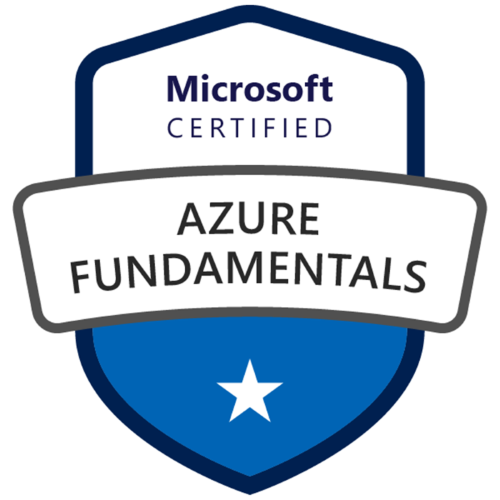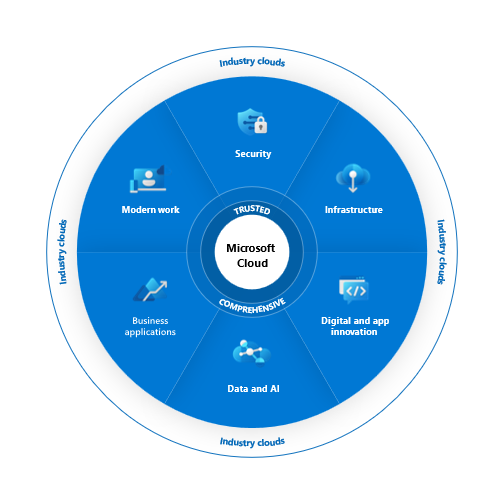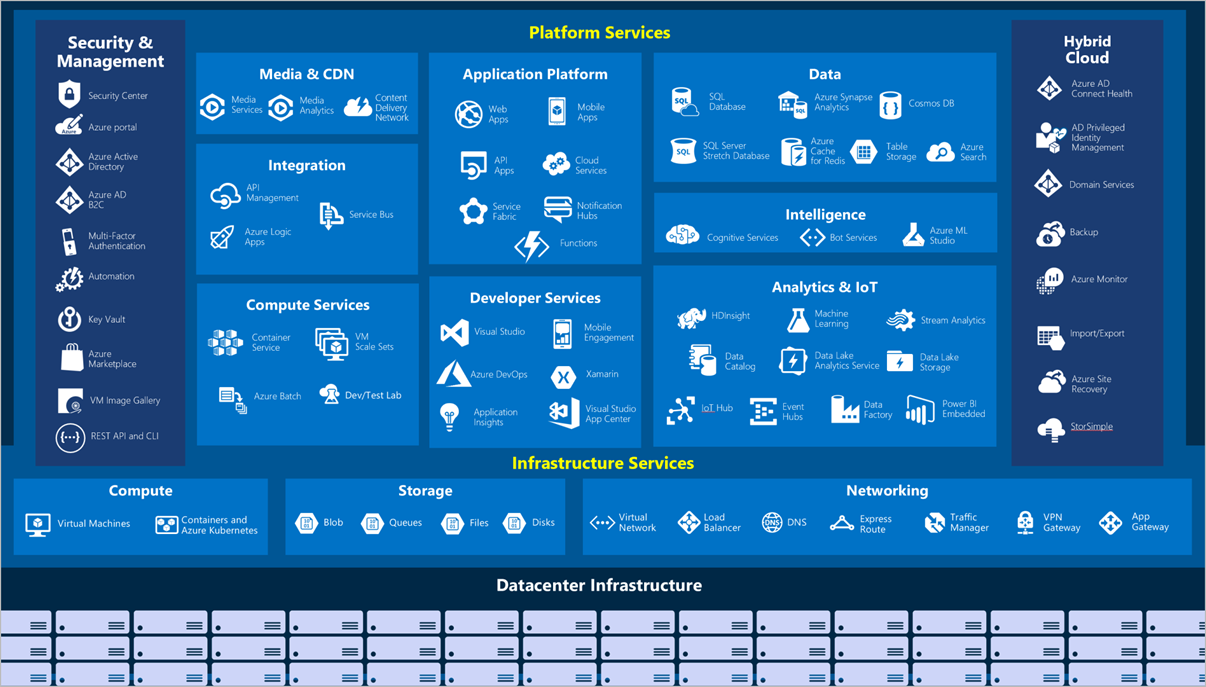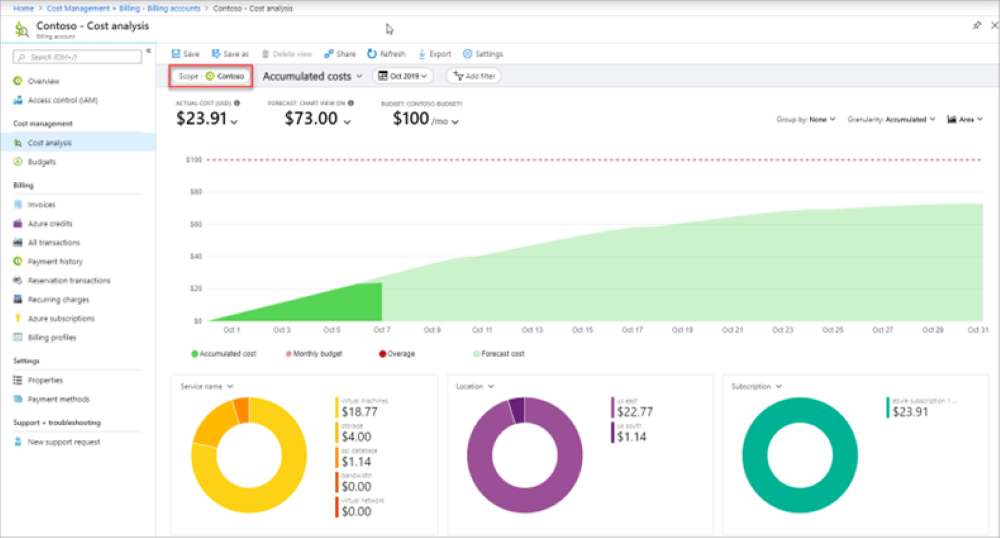Microsoft AZ-900 Exam Preparation: Mastering Azure Fundamentals
In today's technologically driven world, cloud computing has become a cornerstone of business innovation and efficiency. Microsoft Azure, as a leading cloud platform, offers a plethora of services and solutions. The Microsoft AZ-900 Azure Fundamentals exam is a critical stepping stone for professionals who aim to understand and leverage these services. This foundational certification transcends beyond IT professionals, appealing to a broad range of individuals who wish to grasp the essentials of cloud concepts and Azure services. This article unfolds the intricacies of the AZ-900 exam, providing a thorough understanding of its structure, contents, and offering effective strategies for successful preparation.

Understanding the AZ-900 Exam
The AZ-900: Azure Fundamentals exam assesses fundamental knowledge of cloud concepts and Azure services, ensuring a solid base for more advanced learning in cloud computing. The exam is suitable for a diverse audience, welcoming those with minimal technical expertise.
Exam Format and Registration
The exam format includes question types such as multiple-choice, case studies, and drag-and-drop. Typically, it consists of 40-60 questions, and candidates have 85 minutes to complete it. The registration process is straightforward, accessible through the Microsoft website, with options for either online or in-person. (See the “Schedule Exam” section of this article.)
Exam Objectives
The AZ-900 exam is segmented into core domains, each contributing to a specific percentage of the exam:
- Fundamentals of cloud concepts
- Essentials of Azure architecture and services
- Aspects of Azure management and governance

View Full Size
Skills Measured
The skills measured in the AZ-900: Azure Fundamentals exam evaluates the candidate’s understanding and ability to describe concepts and features related to cloud computing and core services in Azure. The following sections outline the concepts (and percentage total) that are covered in the exam.
Describe Cloud Concepts (25–30%)
These include:
- Understanding of cloud computing, benefits, and considerations:
- Public cloud: Services are delivered over the public internet and shared across different organizations.
- Private cloud: Private cloud provides dedicated services for a single organization, offering more control and privacy.
- Hybrid cloud: Hybrid cloud combines public and private clouds, offering a balance of control, privacy, and scalability.
- High availability and scalability: Cloud services ensure that resources are available and can be scaled up or down based on demand.
- Reliability and predictability: Cloud providers offer reliable services with predictable performance.
- Security and governance: Enhanced security measures and governance models help protect data and ensure compliance with regulations.
- Manageability: Simplified management of IT resources allow for better control and efficiency.
- Differentiating between types of cloud services: IaaS, PaaS, SaaS:
- Infrastructure as a Service (IaaS): Provides basic computing infrastructure like servers, storage, and networking.
- Platform as a Service (PaaS): Offers a platform allowing customers to develop, run, and manage applications without the complexities of infrastructure.
- Software as a Service (SaaS): Delivers software applications over the internet, available on demand.
Describe Azure Architecture and Services (35–40%)
These include:
- Deep exploration of Azure architectural components like regions and resource groups:
- Azure regions, region pairs, and sovereign regions: Azure is globally distributed, with regions serving as clusters of datacenters. Each region is paired with another in the same geography for disaster recovery purposes. Sovereign regions, like Azure Government, are specialized regions catering to specific compliance or legal requirements.
- Azure resources and resource groups: Resources are individual Azure services, while resource groups are containers that hold related resources for easy management. This organization aids in lifecycle management and access control.
- Detailed understanding of Azure core services like Azure Compute, Azure Networking, and Azure Storage:
- Compute and networking services: Azure offers compute options like containers, virtual machines, and Azure Functions, each serving different needs. Azure Virtual Machines, VM Scale Sets, and Azure Virtual Desktop provide scalable computing environments. Networking services like Azure Virtual Networks, subnets, peering, Azure DNS, VPN Gateway, and ExpressRoute facilitate secure and efficient networking.
- Azure Storage services: Storage services include diverse options like Blob, File, Queue, and Table storage, each serving different storage needs. They offer various tiers and redundancy options for durability and availability. Tools like AzCopy, Azure Storage Explorer, and Azure File Sync facilitate data movement.

Describe Azure Management and Governance (30–35%)
This includes:
- Familiarity with Azure pricing models, cost management, and service level agreements (SLAs):
- Azure Pricing Calculator and TCO Calculator: The Azure Pricing Calculator helps estimate the cost of Azure services before deployment. It provides detailed pricing for individual Azure services based on configurations and usage estimates. The Total Cost of Ownership (TCO) Calculator, on the other hand, offers a broader perspective. It compares the cost of Azure services with on-premises infrastructure, considering various factors over time to provide a long-term cost analysis.
- Cost management capabilities: Azure Cost Management provides tools and capabilities to monitor, allocate, and optimize cloud costs. It enables detailed analysis and reporting of expenditures, helping organizations stay within budget and forecast future spending.
- Insights into Azure service lifecycle and how it impacts service availability:
- Governance and compliance tools: Microsoft Purview integrates various compliance, governance, and data discovery tools. Azure Policy helps enforce organizational standards and assess compliance across resources. Resource Locks prevent accidental deletion or modification of critical Azure resources.
- Monitoring tools in Azure: Azure Advisor provides personalized recommendations to optimize Azure deployments. Azure Service Health offers insights into the health of Azure services and regions. Azure Monitor, Log Analytics, and Application Insights deliver comprehensive monitoring solutions for Azure services, providing real-time insights, diagnostics, and analytics.

Essential Azure Concepts
Before diving into Azure technologies, it’s essential to grasp the fundamental concepts of cloud computing. These concepts provide the groundwork for understanding how cloud services work and how to apply them to problems and tasks.
Core Azure Services
Azure Virtual Machines offer scalable computing power, while Azure App Services provide a platform for hosting web applications. Azure’s networking services, like Azure Virtual Network, enable secure connectivity. Data storage solutions such as Azure SQL Database cater to diverse data storage needs.
Azure Pricing and Support
A thorough grasp of Azure's pricing structure, including pay-as-you-go and reserved instances, is necessary. The Azure Pricing Calculator is a valuable tool for estimating costs. Knowledge of Azure's support plans, ranging from basic to premium, is crucial for effective cloud management.
Security, Privacy, Compliance, and Trust
Delve into Azure’s robust security framework, including tools like Azure Security Center and Microsoft Sentinel. Understand Azure's privacy policies and its compliance with global standards like General Data Protection Regulation (GDPR). Familiarity with Microsoft's principles of trust and responsible AI is also essential.
Preparing for the AZ-900 Exam
Maximize your preparation with official resources from Microsoft and complement them with third-party materials. Books like Exam Ref AZ-900 Microsoft Azure Fundamentals and online platforms like Pluralsight or Udemy offer in-depth coverage of the exam syllabus.
Study Resources
Microsoft recommends that you train and get hands-on experience before you take the exam. Microsoft offers self-study options and classroom training as well as links to documentation, community sites, and videos.
| Study resources | Links to learning and documentation | |
|---|---|---|
| Get trained | Choose from self-paced learning paths and modules or take an instructor-led course | |
| Find documentation | Azure on Microsoft Learn Azure documentation Microsoft Cloud Adoption Framework for Azure Accelerate cloud adoption with the Microsoft Cloud Adoption Framework for Azure | |
| Ask a question | Microsoft Q&A | Microsoft Docs | |
| Get community support | Azure Community Support | |
| Follow Microsoft Learn | Microsoft Learn - Microsoft Tech Community | |
| Find a video | Exam Readiness Zone Azure Fridays Browse other Microsoft Learn shows |
Hands-On Practice
Theory is essential, but hands-on practice is equally crucial in mastering cloud concepts and technologies.
Use your Azure account (or set one up) and explore the cloud services in the Azure portal. Work on practical exercises and projects to apply what you’ve learned and to gain confidence in using cloud technologies effectively.
Set Up a Free Azure Account
Set up a new Azure account, if you don’t have one or you want to test.
Azure Free Account: Start Free
Practice With These Exercises
Use these exercises and courses to practice:
Full course tutorial by freeCodeCamp.org
Join Azure Communities and Forums
Engaging with the AI community can be highly beneficial during your preparation. Join online forums, AI communities, and social media groups where professionals discuss AI topics and share their experiences.
Take Practice Tests
Practice tests are invaluable for assessing your knowledge and identifying areas that need improvement. Look for reputable platforms that offer AZ-900 practice tests and attempt them under exam-like conditions.
Take free practice assessment (Note: You must be signed in to your Microsoft account.)
Schedule Exam
Don’t miss the opportunity to advance in your career. Schedule your exam today and take the leap towards greater success.
Schedule it here (Note: You must be signed in to your Microsoft account.)
Exam’s discounts
Here are ways to save some money on your next exam.
30 Days to Learn It
The 30 days to learn it is a dynamic program designed to enhance proficiency in various Microsoft technologies within a 30-day learning framework. Participants are encouraged to complete a set of learning modules within this period, positioning themselves to excel in their respective fields. This challenge not only facilitates the acquisition of new skills but makes you eligible for 50% off the cost of a Microsoft Certification exam by completing your challenge within 30 days.
Microsoft Cloud Skills Challenge
At the Microsoft Ignite and Microsoft Build events, Microsoft Cloud Skills Challenge is presented. If you complete your challenge before the end date, a Microsoft Certification exam will be associated with your Microsoft Learn profile by the date marked, or other offers will be available.
Conclusion
Earning the AZ-900 certification is more than passing an exam; it's about gaining a fundamental understanding of Azure's capabilities and setting the stage for a successful journey in cloud computing. This article aimed to equip you with the knowledge and resources needed for comprehensive preparation. Embrace the learning process, stay consistent, and approach the exam with confidence. The AZ-900 certification not only validates your foundational knowledge but also paves the way for future growth and opportunities in the cloud domain.
Additional Resources
Azure Pricing Calculator: Calculate Costs


